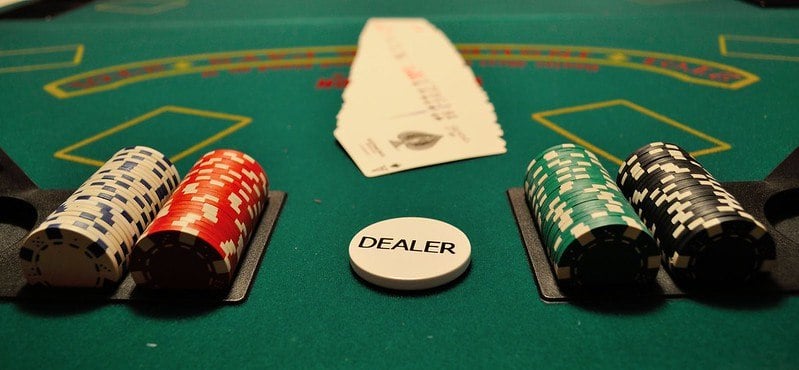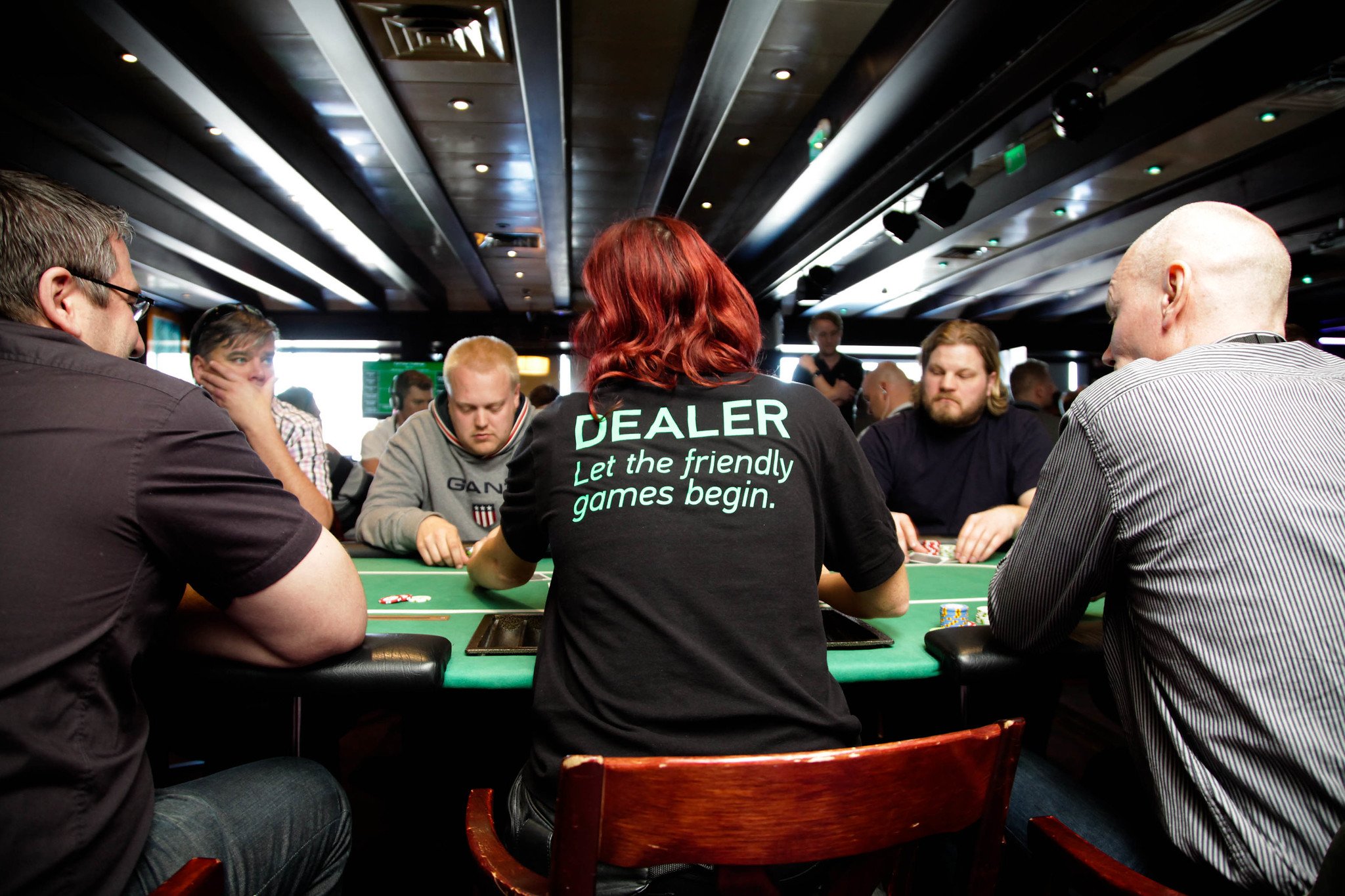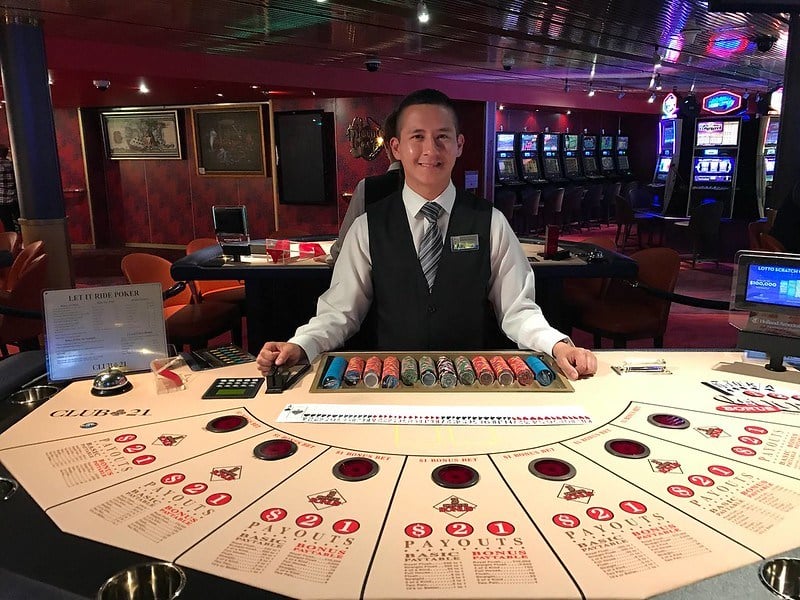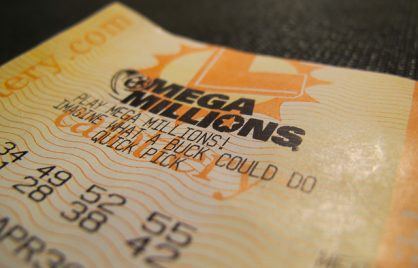R. Paul Wilson On: Cheating With a Cold Deck
Editor’s Note: In this article, R. Paul Wilson discusses using a cold deck, or rather a deck of cards that has been unfairly tampered with by a cheater to produce certain hands after being dealt. He explains how you can make this sneaky switch and includes some insight into the cheating world with real-life examples. If you dare to try this trick yourself, please let us know if you got caught!

“The closest thing to dropping a bomb on the table.”
There’s nothing subtle about most cold decks, where an entire pack of cards is switched after the shuffle and dealt to a known order. It’s the ultimate weapon of mass destruction and in most cases, when the smoke clears and the hand is over it “wakes the dead”.
So, what is a cold deck and how does it work in a real game?
Get your head around the basics
A cooler is a stacked deck.
A deck switch is how two decks are exchanged in the course of play.
The result is grand larceny at the card table.
When a stacked deck is secretly introduced to a game, it’s said to be cold simply because it has yet to be handled – but if you’re sweating buckets, waiting to put a cooler into a game, that deck is absorbing plenty of heat, trust me!
The only heat a cheater should really care about is from other players. Switching decks is a big move and even in the hands of an expert, is impossible if people are paying too much attention.
Not that a great cold deck move can’t look spectacular.
I collect my favourite switches and practise them endlessly, occasionally adapting them to performance where I use the move to fool audiences who are invited to watch closely.
A great cold deck – a real cooler – needs to feel right and fit the context of a game perfectly.
I’ve seen tutorials by talented magicians showcasing variations on cheaters’ methods that look amazing but neglect the real work that makes these moves practical, workable or just plain worth the risk. During my career as a TV hustler and on a couple of real world occasions, I’ve thrown more than my fair share of deck switches. I’ve developed an appreciation for what really works and these showy, impressive stunts are just a fraction of what’s needed at the table.
More important than how a deck is switched is when
The techniques I’ve collected vary in difficulty, but the really hard part is not the sleight itself. To properly understand a move it needs to be used under fire. Practice alone for eight hours a day and you might develop the muscle memory and physical expertise needed for a move. But to execute that same move secretly in the course of a game takes nerves of steel.
A deck switch is commonly performed by the dealer or the player who cuts the deck. Other possibilities exist from players at the right position in relation to the dealer’s procedure to waiters, waitresses or anyone who interacts with the table for seemingly legitimate reasons.
A typical dealer switch happens after the shuffle and before or after the cut, depending on whether a confederate is sitting to the dealer’s right. Once the deck has been thoroughly shuffled, a switch is made, sometimes followed by a false shuffle to maintain the order. The deck is then presented for the cut to the dealer’s secret partner with a tiny brief (a small step or ledge) that marks where to cut.
Without a confederate, the switch might be made after the cut, just before the deal.

A mechanic (card cheater) taught me a method that can be scrutinised with nothing to see but two empty hands before and after the switch: the dealer simply carries an honest cut, gestures for the antes and the deck is already switched! The stacked deck was hidden in his sleeve using a special device and when the gesture was made for players to throw in their antes, the shuffled deck was dropped into the cheaters lap as the stacked deck was instantly delivered to the same hand.
To accomplish this, the cheater had invented that secret device and adapted another “secret something” to make the move perfect.
The deck switch happened at the best time: after a legitimate shuffle and cut and under natural cover that happens in every round of play. I promise you, if you zoomed into his hands with the Hubble Telescope, you wouldn’t see or suspect a thing and if you saw him do it with two differently coloured decks the change from a red deck to a blue deck looks like magic.
Many sleight of hand switches look incredible in the right hands but not all of them are practical. I’ve seen impressive exchanges that fool the camera but look highly suspicious to the naked eye or can be exposed as useless with two simple questions: how do you get into that and how do you get out of it?

For a cheating dealer, these are important considerations and few deck switches qualify as usable. In fact, if a dealer is getting ready to cheat you (or already has) you might spot it in their behaviour before or after that perfect move.
For a player switch, getting ready and getting rid of the cards you just switched is somewhat easier without the business of shuffling and dealing to worry about. A player switch is a powerful move if the dealer is completely honest since all suspicion flows in their direction after a loaded hand. When the cards are passed from player to player for the deal, cheaters might conspire to put a sucker between them so one can distract the dealer (and the table) while his partner makes the cut.
When presented with the cut, the cheater will execute a sequence of actions that match his honest actions earlier in the game. In other words, he appears to cut the cards in the same way he has been cutting them all night but hidden within this action is the exchange of fifty-two shuffled cards for fifty-two pre-stacked cards.
In the movie The Sting, Doyle Lonnegan performs an excellent example of a player switch when asked to cut the cards. This switch can look incredible but what sets this scene apart is that we see him prepare the cooler, then dispose of the slug using a pocket handkerchief. All attention follows the cards, so the cheater is only exposed for a split second.
The Real Hustle vs The Hendon Mob
Back in the first season of The Real Hustle, we invited members of the Hendon Mob to a private poker game under the ruse of two reality TV types (myself and Alex) who were aiming to learn poker from the professionals. In the course of that game I dropped more than one cooler onto the table, partly because deck switches were the subject of this scam but mostly because neither Alex nor I stood a chance against three hard-nosed professionals!
Barney Boatman, a true gent and a deadly player was knocked out by the first cooler and commented: “that was a cold deck” before retiring to the other room where our producer let him in on the scam.
When he said those words, I thought we were surely busted but it turned out it’s a common term for a hand where two or more big hands compete for the pot. Since our show was for a non poker-playing audience, I had stacked for obvious hands like fours of a kind and straight flushes.
Later he told me how he’d seen hands like that every now and then and I’ve lost four of a kind to a straight flush myself (in a fair game) so these things do happen. A subtle cooler might be safer than dealing hero hands to everyone but I’ve found some cheaters who could care less about taking time and are just there to rob the bank as quickly as possible.
The Vegas Method
In the bad old days of Las Vegas when less scrupulous managers ran the card rooms, cheaters were often employed to deal games and rip off tourists. A friend worked one of these joints where the deck switch was as easy as it gets. When a fresh tray arrived with a new dealer, there would be two decks in the tray. Joining the game, the dealer would spread his first deck face up for everyone to see. These cards were in new-deck order – all fifty two cards in sequence, separated by suits.
The dealer would then shuffle thoroughly and deal.
The deck switch was a simple lapse in procedure. At some point in the game, a house player (who was part of the scam) would call for a fresh deck. The cards would be changed and the new deck spread face down NOT face up. The dealer would then “forget” to flip the cards face up and proceed to shuffle.
Nine hundred and ninety-nine times out of a thousand, no one noticed or cared that the faces were not shown and if they did, the dealer would call for a fresh deck and apologise. The rest of the time, a few false shuffles and a controlled cut was all it took to fleece the strangers at the table (locals and regulars were often avoided).
This simple sequence once led to a difficult situation where my friend mistakenly believed he had a stacked deck waiting in his tray which was actually a normal deck in new deck order. When a change of cards was requested, he spread the cards face down, false shuffled, cut and dealt a round of seven stud.
When the up cards came out, they came two of hearts, three of hearts, four, five, six, seven, eight and nine of hearts!
My friend, the dealer, quipped “What are the chances of that? Must be a hundred to one!”
He quickly resolved the matter with an “accidental” misdeal and restarted the hand.
We’re not sure we could pull this one off! If you enjoyed this, be sure to come back in two weeks for R. Paul Wilson’s next post all about the Put and Take scam.


